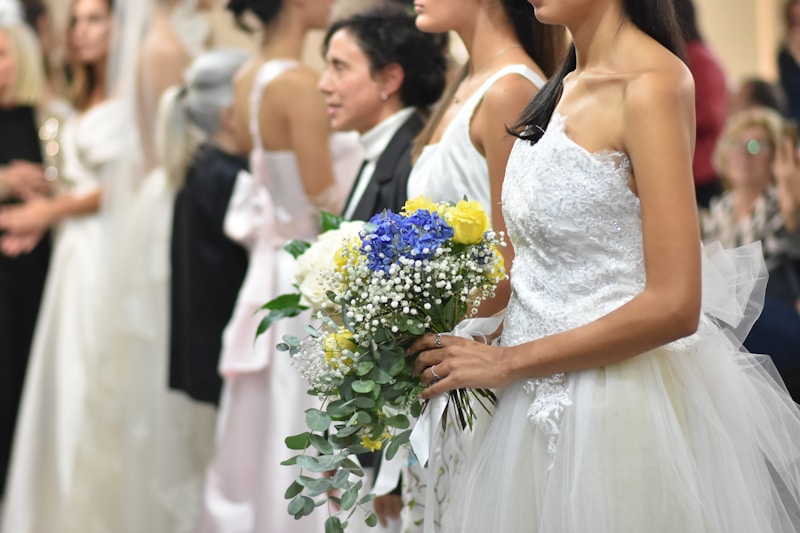The Impact of Cultural Influences on Bridal Design Choices
The Impact of Cultural Influences on Bridal Design Choices
Wedding ceremonies are among the most culturally significant events across the globe, often reflecting the traditions and values of different societies. As a result, bridal design choices encompass a rich tapestry of cultural influences that shape everything from dress styles to accessories. In this article, we will explore the diverse ways culture impacts bridal fashion, highlighting key elements that brides should consider when making their designs.
Understanding Cultural Influence on Bridal Fashion
Cultural influences on bridal design choices can be traced through history. They serve as a narrative of traditions, rituals, and social norms inherent in various societies. Many brides today draw inspiration from their cultural heritage as well as modern interpretations, leading to an intriguing blend of style and custom.
Key Cultural Factors Affecting Bridal Designs
There are several cultural elements that influence bridal apparel, including:
- Historical Traditions: Many cultures have time-honored practices influencing the design of bridal wear, dictating colors, styles, and materials.
- Symbolism: Elements like color and fabric often symbolize different meanings, signifying prosperity, purity, or love.
- Regional Variances: Even within the same country, regional customs can lead to stark differences in bridal fashion.
- Religious Practices: Religious beliefs often dictate attire, with specific guidelines for modesty and symbolism in various faiths.
Global Bridal Fashion Trends
Let’s take a closer look at distinct bridal design choices that have emerged from different cultures around the world:
| Region | Bridal Wear Characteristics | Cultural Significance |
| East Asia | Qi Pao or Cheongsam features intricate embroidery and traditional patterns. | Symbolizes femininity and tradition. |
| South Asia | Brides often wear lavish lehengas or sarees adorned with gold and gemstones. | Represents wealth and cultural pride. |
| Western Cultures | White gowns with modern styling, often complete with lace and veils. | Signifies purity and new beginnings. |
Modern Interpretations of Traditional Bridal Wear
Today, many brides are opting for a modern spin on traditional attire. For instance, combining elements from different cultures is increasingly popular, reflecting a globalized world where cultural exchange is commonplace. The fusion of Western and Eastern styles can be seen in various bridal collections, where traditional fabrics such as silk and brocade are used alongside Western silhouettes.

Factors Brides Should Consider
When choosing their bridal designs, here are several factors that brides should consider:
1. Personal Heritage and Family Traditions
It’s essential for brides to take their personal heritage into account. Many brides honor their family traditions by wearing heirloom bridal attire or incorporating family colors or motifs into their wedding day wardrobe.
2. Cultural Significance of Colors
Colors carry powerful meanings across cultures. For example, red is a significant color in many Asian cultures as it represents good fortune and joy, while white is predominantly seen in Western weddings as a sign of purity. Understanding these cultural associations can help brides make informed decisions about their attire.
3. Fabric Selection
The choice of fabric is also influenced by cultural preferences. Heavy silk brocades may be favored in traditional South Asian weddings while lighter lace and organza are common in Western-designed gowns. Choosing the right fabric can enhance the overall aesthetic and comfort of the gown.
4. Accessories and Embellishments
Accessories play a crucial role in enhancing bridal looks. Cultural influences can dictate the type of jewelry worn, hairstyle choices, and even the materials used for headpieces. Traditional accessories may include the maang tikka in Indian culture or the veil commonly seen in Western ceremonies.
5. Venue and Theme
Lastly, the wedding venue can influence bridal design choices. A beach wedding may call for lighter, flowy gowns, while a traditional church ceremony may warrant more classic silhouettes. Incorporating the venue’s environment into the bridal design will create a cohesive visual story for the wedding day.
Conclusion
The impact of cultural influences on bridal design choices is profound and wide-ranging. Understanding the various factors at play can help brides create a look that not only reflects their own style but also honors their heritage. By considering elements such as personal history, cultural significance of colors, fabric choices, and venue context, brides can achieve a harmonious balance between tradition and modernity.
In summary, when planning a wedding, it’s important for brides to delve into their cultural backgrounds and understand how it impacts their bridal design choices. One should also be conscious of the significance of colors, fabrics, and accessories, ensuring that they align with both personal preferences and cultural narratives. Ultimately, a wedding should be a joyous celebration of love, unity, and cultural heritage.
As you envision your dream wedding, take the time to explore and appreciate the cultural aspects of bridal design. It might lead you to discover stunning options you may not have otherwise considered!
